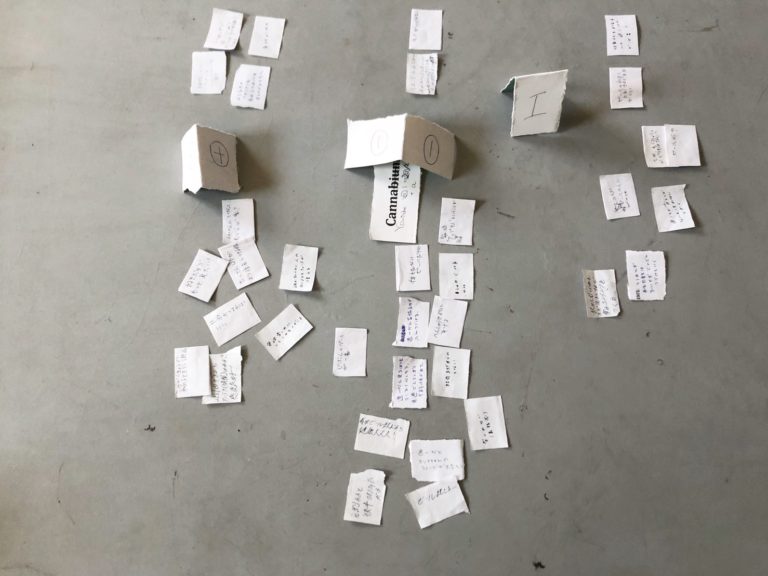In this issue, we will discuss how to come up with ideas. In the last issue, I wrote about 7 habits that make it easier to come up with ideas in Important Seven Habits for Creativity.
In this article, I will introduce five ways of idea that we have adopted at ArtSurviveBlog and that have actually been useful.
目次
1.Brainstorming
It is a well-known conception method. The method was invented by Alex F. Osborne in the United States.
Brainstorming is based on the following rules to generate ideas
❶ No criticism
❷ Free to come up with ideas
❸ Prioritize quantity over quality.
❹ Combine ideas with each other.
You may be familiar with rules 1 through 3, but let me explain a little about rule 4.
In brainstorming, it is recommended not only to keep coming up with ideas, but also to combine the ideas that come up and to take advantage of others’ opinions.
By doing so, each idea becomes more dense.
If you use the KJ method or other methods to organize the ideas that come out of brainstorming, you will be able to see even more interesting ideas in a three-dimensional way. For details, please refer to the previous article “How to Organize Ideas”.
2. Characteristic Enumeration and SCAMPER Method
This method is not intended to come up with new ideas, but rather to develop the ideas you have.
The following nine questions are used to make ideas more dense.
1. Substitute・・・ What can be replaced?
2 .Combine:・・・What can be combined?
3. Adapt・・・What can be added?
4. Modify・・・What can be modified?
5. Magnify・・・Could it be scaled up or something added?
6. Put to other purpose・・・Could you put the product to a different use, or use it in another industry?
7. Eliminate・・・What can be removed or simplified?
8. Reverse・・・What would happen if you reversed the product’s production process?
9. Rearrange・・・What can be swapped or flipped?
The above questions are related to important things such as the cost of producing the work and where to store it after production.
3. Random Inputs

Try to gather information at random without deciding on a specific theme. By not deciding on a theme, you may come up with ideas that are different from the usual.
Before trying other ways of thinking, try to decide on a certain amount of time to do it. After that, it is a good idea to try other ways of thinking.
4. Voting and highlighting method
The first step is to score and rank several ideas. The method is to focus on the ones with the highest ranking and think about them in depth.
For example, several people are working on an idea. Each of them has a background, and the ideas that come up will vary. Even if each idea is good, it may not be possible to realize all of them in most cases.
In such a case, ranking the ideas will help you to have a clear order of action, which will help you to break your worries.
It can also be used when more than one person is considering which is the best option.
5.PMI

What is the PMI method?
PLUS
MINUS
INTEREST
The PMI method is an acronym for PLUS MINUS INTEREST. By evaluating an idea from each of these perspectives, we discover new perspectives and ideas.
I think I was able to organize my ideas by looking at myself objectively, for example, I found that what I was not very enthusiastic about doing was often more positive than I expected, and I became more motivated to do the opposite, or I found that what I was thinking of doing was not so positive.




